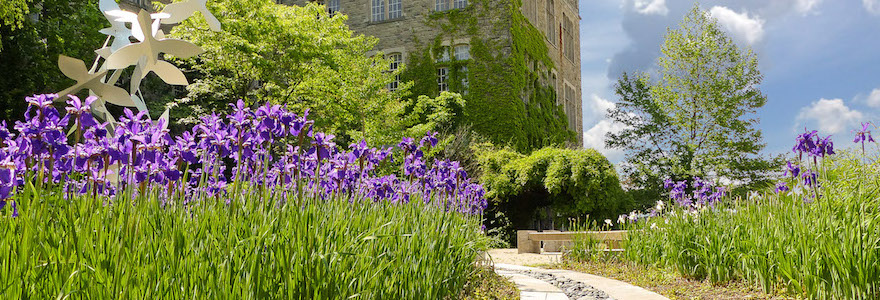Green Space & Gardens
Overview
Western was founded in 1878 and spans over 450 hectares of land. We take pride in our landscape and strive to sustainably maintain our green spaces. This includes the protection of natural and wetland areas throughout the campus as well as restoration to the land. For example, plants such as milkweed are left to flower, even in areas where they are not intentionally planted, as they are an important source of food for pollinators.
Our campus is located within the Carolinian Life Zone; the most biodiverse ecological region in Canada! Some of the ways we contribute to protecting this unique ecological region in which we're located is through the Sherwood Fox Arboretum, and through our Bee Campus designation, including Pollinator Gardens.
Ecological Landscaping
Landscape Services at Western uses a variety of practices to support ecologically-beneficial plantings across campus. Native plants are considered first in planting plans, and the right plant is selected for the right location.
In Western's new rain garden by the Physics and Astronomy Building low maintenance native plants like coneflower, Joe-pye weed, and Christmas fern will be planted. Non-native plants are selected to complement native species, where conditions are not suitable to native plants, and to contribute to our role as an Arboretum. Jane's Garden in the Biological & Geological Sciences Building (BGSB) courtyard is a great example of this planting practice with many native and non-native plants.
Invasive Species Management
Invasive species have been targeted aggressively across campus. Buckthorn and non-native honeysuckle have been targeted in the woods behind IGAB, parts of the river bank, and other areas around campus. An invasive Arailia species was identified by faculty in the Department of Biology, and has also been targeted. In collaboration with Brescia University College, Phragmites is being controlled in the area behind Ivey Business School.
Invasive species are not planted on campus, and those that are in place will stay until they reach their end of life and are cut down (e.g. Norway Maple); along with succession plantings of appropriate species. We have also had an Environmental Sciences class and graduate students in the Masters of Environment and Sustainability program participate in Buckthorn Busts, including both removal of the invasive species, and data collection. If you're interested in getting involved, please contact us at sustainability@uwo.ca.


